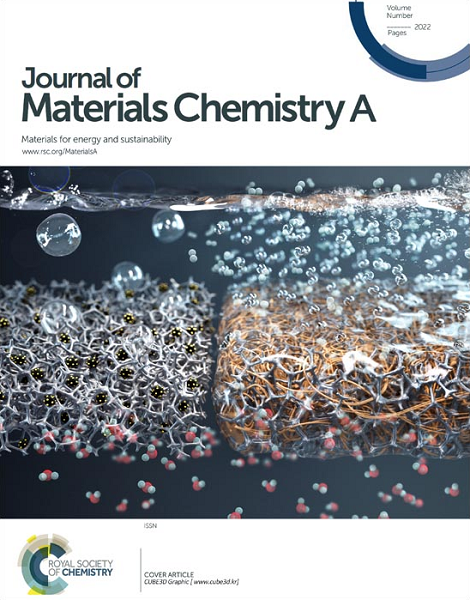Hybrid d0 and d10 electronic configurations promote photocatalytic activity of high-entropy oxides for CO2 conversion and water splitting
IF 10.7
2区 材料科学
Q1 CHEMISTRY, PHYSICAL
引用次数: 0
Abstract
Photocatalysis offers a sustainable solution for essential reactions such as CO2 conversion and water splitting, but constraints in catalyst properties like bandgap and active site availability often limit its efficiency. High-entropy oxides (HEOs), which incorporate five or more different cations, present significant potential for this application due to their elemental diversity. This study explores active HEO development for photocatalytic applications by integrating cations with d0 and d10 electronic configurations. A single-phase HEO with a monoclinic structure was successfully synthesized, comprising elements with d0 (titanium, zirconium, niobium, and tantalum) and d10 (zinc) electronic configurations. Comprehensive analyses of its microstructure, chemical composition, optical properties, and photocatalytic activity were conducted. The resulting TiZrNbTaZnO10 exhibited superior UV and visible light absorption, a low bandgap of 2.5 eV, minimal radiative electron-hole recombination, and high stability under photocatalytic conditions. Remarkably, TiZrNbTaZnO10 outperformed TiZrHfNbTaO11 photocatalyst which contains solely d0 electronic configurations. This enhanced performance is attributed to the mixed electronic configurations fostering heterogeneous chemical environments, which facilitate efficient charge carrier separation and transfer.混合 d0 和 d10 电子构型促进了高熵氧化物在二氧化碳转化和水分离方面的光催化活性
光催化为二氧化碳转化和水分离等基本反应提供了一种可持续的解决方案,但催化剂性能(如带隙和活性位点可用性)方面的限制往往会限制其效率。高熵氧化物(HEO)含有五种或五种以上不同的阳离子,由于其元素的多样性,在这一应用领域具有巨大的潜力。本研究通过整合具有 d0 和 d10 电子构型的阳离子,探索了光催化应用中活性高熵氧化物的开发。研究人员成功合成了一种具有单斜结构的单相 HEO,其中包含 d0(钛、锆、铌和钽)和 d10(锌)电子构型的元素。对其微观结构、化学成分、光学特性和光催化活性进行了全面分析。所制备的 TiZrNbTaZnO10 具有出色的紫外线和可见光吸收能力、2.5 eV 的低带隙、最小的辐射电子-空穴重组以及在光催化条件下的高稳定性。值得注意的是,TiZrNbTaZnO10 的性能优于仅含有 d0 电子构型的 TiZrHfNbTaO11 光催化剂。这种性能的提高归功于混合电子构型促进了异质化学环境,从而提高了电荷载流子分离和转移的效率。
本文章由计算机程序翻译,如有差异,请以英文原文为准。
求助全文
约1分钟内获得全文
求助全文
来源期刊

Journal of Materials Chemistry A
CHEMISTRY, PHYSICAL-ENERGY & FUELS
CiteScore
19.50
自引率
5.00%
发文量
1892
审稿时长
1.5 months
期刊介绍:
The Journal of Materials Chemistry A, B & C covers a wide range of high-quality studies in the field of materials chemistry, with each section focusing on specific applications of the materials studied. Journal of Materials Chemistry A emphasizes applications in energy and sustainability, including topics such as artificial photosynthesis, batteries, and fuel cells. Journal of Materials Chemistry B focuses on applications in biology and medicine, while Journal of Materials Chemistry C covers applications in optical, magnetic, and electronic devices. Example topic areas within the scope of Journal of Materials Chemistry A include catalysis, green/sustainable materials, sensors, and water treatment, among others.
 求助内容:
求助内容: 应助结果提醒方式:
应助结果提醒方式:


